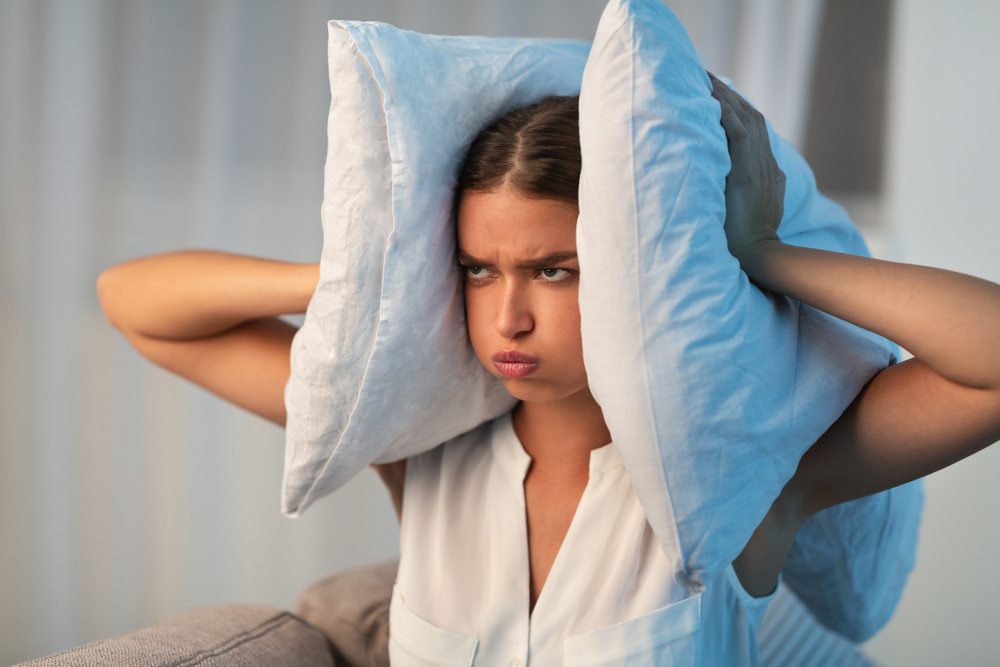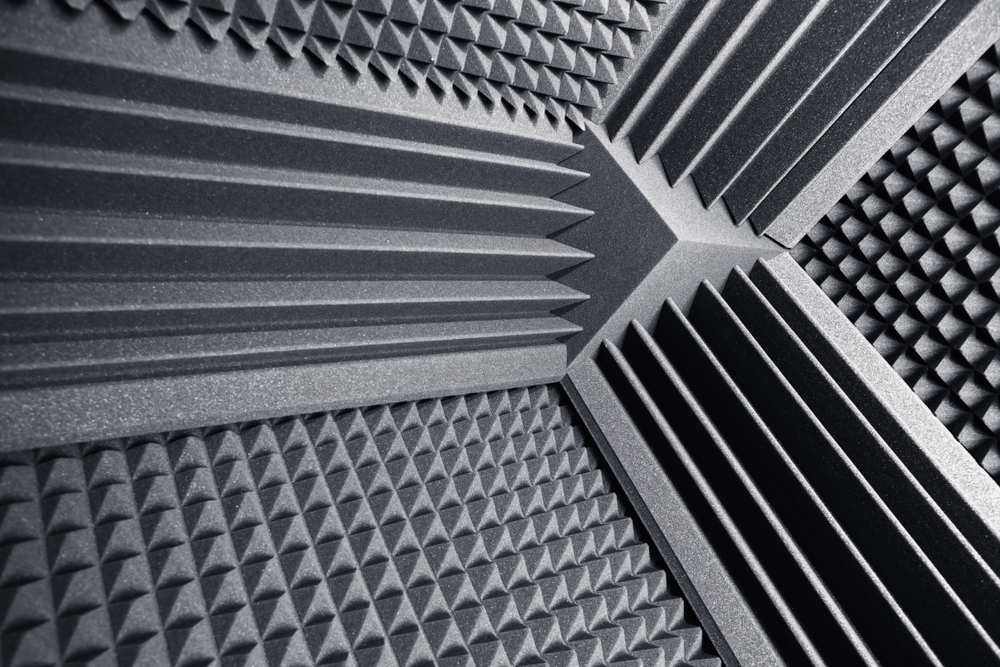Low-Frequency Noise Solutions
What Is Low-Frequency Noise?
Noise is defined as “unwanted, unpleasant, or disruptive sound.” When we talk about noise, we are usually thinking of background noise such as passing traffic, other conversations in the same room, or a neighbor watching TV too loudly.
Low-frequency noise (LFN) is a bit more specific. All sound is vibration, and frequency is the number of times a sound wave passes a specific point in a single second. The adult human ear is only capable of consciously recognizing sounds in the range of 5 - 18,000 Hz. Low-frequency sound may be loosely defined as having a frequency below 150 Hz, meaning that it might be difficult to hear.
Even while barely being on the audible spectrum, low-frequency noise can have a profound effect on one's psychological and physiological well-being. It can often be a source of irritation. While occasional low-frequency noise might not be an issue, imagine sitting in an office for 8 hours every day and having the constant beat of the music from a nearby fitness center or trying to fall asleep with the unending thump from your neighbors boom box preventing you from getting a good night’s rest.
Let's take a moment to see why low-frequency noises are so hard to detect and what we can do to alleviate this nuisance.
Sound Attenuation At Low Frequencies
Sound attenuation is the dampening of sound. Once sound is dampened enough it becomes unnoticeable. So, why is it so difficult to soundproof against low-frequency sound? You may think that low-frequency sound would require less dampening than high frequency and that it would be easier to soundproof against. Unfortunately, you would be wrong.
Low-frequency noises can be difficult to locate. A high-frequency noise such as a television or a person talking is easily identifiable. However, a low-frequency noise such as the hum of electrical transformers or the constant boom of outside traffic might be difficult to locate. The low-frequency can also make the source of these sounds harder to pick up against ambient background noise.
Even once a low-frequency noise’s source is discovered, effective sound treatment can be difficult. The noise reduction coefficient (NRC) of an acoustic panel drops significantly below 500 Hz. This means panels are not as effective at absorbing low-frequency sounds and work better with mid-high frequency.
Since sound absorption is more difficult, what about soundproofing? Surely low frequency with fewer vibrations has a harder time traveling through a sound barrier, right? Wrong. The sound transmission rating for materials such as mass loaded vinyl sound barriers and acoustic wall paneling also drops off at low frequencies. These materials tend to better dampen and block low-frequency sounds than acoustic panels, often having a higher STC above 200 Hz.
With this in mind, there are products that work well against low-frequency noise. While acoustic panels and barriers might not be completely effective, on their own, they still do have an impact on sound attenuation. However, there might be a better option. Acoustically treated doors, sound control blankets, and bass taps have a more significant effect on low-frequency noises and might just be the solution you are looking for.
Acoustical Solutions To Low-Frequency Noises

Soundproof Studio Doors
One way to deal with annoying low-frequency noises is with soundproof studio doors and windows. These doors are specially made for commercial recording studios and significantly reduce the amount of sound and vibration that is transferred through them.
QuietSpec makes exceptional studio doors with high STC ratings that can be used in residential spaces such as home offices, theaters, and recording studios. They are also commonly installed in commercial areas that produce a lot of noise, including dance studios, wedding venues, bars, executive offices, conference rooms, and more.
While a soundproof studio door is an effective tool at blocking all kinds of sounds, without a proper seal, unwanted sound can still enter the room. Think of it this way: A bank wouldn’t install a massive solid steel vault door for a room made of plywood. Likewise, a studio door with open gaps that air and sound can easily travel through doesn’t have much use. Be sure to seal off any gaps or openings in your door frame with acoustic door seals. These automatic door seals fill the gap between the door and its frame or floor, stopping sound in its tracks.
While studio doors and seals are effective soundproofing measures, they are only able to block sound from outside the room and will not provide much use if the cause of the noise is inside the room with you.
Sound Control Blankets
For areas with heavy machinery or construction, sound control blankets can save you and nearby pedestrians from a headache. Made from acoustic and mass loaded vinyl barrier, Sound Control Blankets provide high-performance sound dampening for many frequencies. They are often installed or hung along the walls and fences surrounding a construction zone. They excel at absorbing equipment noises, sounds of traffic, and the roar of an excited crowd. Sound control blankets can be placed almost anywhere, are easy to put up and take down, and can be reused, making them a popular choice for sound control. They can even be draped over hard surfaces that easily bounce sound or line the panels of an enclosure that surrounds elevator equipment, pool pumps, or other machines to help dampen the noise they produce. They are durable, easy to clean, and water resistant, making them an ideal choice for outdoor use, even in messy areas such as a construction site, live concert and other event venues.
Bass Traps & Cotton Panels
Bass traps are similar to acoustic panels; however, acoustic panels are designed with high-mid frequencies in mind, and bass traps are specifically built to absorb low-frequency noise. Bass traps are acoustic energy absorbers that aim to dampen low-frequency noises. They work to attain a flatter low frequency, making the noise less noticeable and easier to ignore. They can be installed just like acoustic panels and are often found in media rooms, home theaters, music practice rooms, and any enclosed space where a “boomy” sound is desired. When it comes to sound control for low-frequency noises, UltraQuiet cotton bass traps are king.
Another way to dampen low-frequency noise is with cotton panels. These panels absorb reverberation, preventing noise from being bounced off hard surfaces and helping the sound to diminish over time. They are easy to install and boast a Class A fire rating, making them convenient and safe. While they might not be designed with low-frequency noise in mind like bass traps, cotton panels can still have a noticeable effect on the noise.
|
|
|


